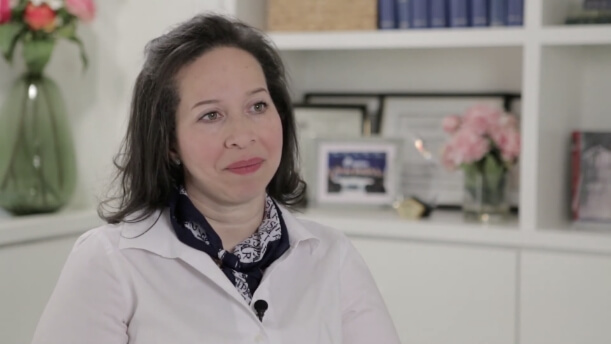Two Or More Weeks Before Surgery
Pre-operative Labs
Preoperative lab work must be obtained and reviewed prior to surgery. The lab work should be completed 3 weeks prior to surgery. You may also be asked to see a cardiologist before your surgery.
Medications
Do not take any aspirin containing medication including cold formulas for at least 2 weeks prior to surgery. Please let us know if you are taking or have been taking any herbal supplements or vitamin E. These will need to be discontinued also. Medications that contain aspirin or an anti-inflammatory compounds have a tendency to decrease the average clotting capacity and increase bleeding during surgery. Tylenol may be used instead as it does not have these untoward effects. If you are on Tamoxifen, you need to stop taking this medication 3 weeks before surgery.
Smoking
Smoking compromises blood flow by causing spasm of blood vessels and significantly increases the risk of flap complications and wound healing problems. Therefore, DO NOT SMOKE for at least 8 weeks before and 6 weeks after surgery. This also applies to second hand smoke; therefore do not stay in the room with cigarette smokers.
Two Nights Before Surgery
Hibiclens™ Soap
Use Hibiclens™ (over-the-counter antibacterial skin cleanser) in the shower instead of soap two nights prior to surgery. Apply the minimum amount of Hibiclens™ necessary to cover the skin from shoulders to thighs and wash gently. Rinse again thoroughly (be careful not to get the product on your face, eyes, or ears). You do not need a prescription for this.
Notification of Illnesses
Notify our office promptly if cold, fever, or any illness appears before surgery. Call in any allergies, medications, or conditions you may have forgotten to tell us about.
Night Before Surgery
Eating and Drinking
Do not eat or drink anything after midnight the night before surgery. This includes gum, candy and water. Failure to comply with these instructions may result in cancellation or delay of your operation. If you are diabetic and take insulin you will be instructed how to take your medication and discuss this with your anesthesiologist during the preoperative visit.
Arrival For Surgery
Please be punctual. If you are running late, please be aware that not arriving on time may cause cancellation of your surgery.
Post-Operative Instructions
Medications
There are 3 medications that you may need after surgery:
- Antibiotic – to be continued until the drains are removed
- Pain Medication – remember this medication might make you feel groggy and constipated and cannot be mixed with alcohol
- Vistaril – Muscle relaxant for back discomfort 50 mg 4-6 times daily (as needed)
Flap Monitoring
The flap(s) should always be warm and the same color as the donor site abdominal skin. Keep in mind that the breast mastectomy skin can be bruised and a different color from the flap skin. When you press gently with your finger, the flap should lighten and return to normal color within 2 to 3 seconds. If there is any change in the color, temperature, or pain notify the office immediately.
Doppler
You may be discharged home with an implantable Doppler wire in place, which is a tiny wire that will be removed at your first clinic visit. It will be covered with a transparent dressing which is waterproof. You may shower with this dressing.
Drains
You will also be discharged home with your drains in place. There are usually 2 drains in the abdominal area, and 1-2 in each operated breast. It is necessary to record total daily output for each drain. When the drain is near full, empty the contents into a measuring cup and record the amount in ml (equal to cc). You can also use the drain bulb itself that has markings to measure the output. Strip the drain tubing 3 times per day. If the drain requires emptying more than once per day, enter the DAILY TOTAL in the appropriate space on a Drain Record Sheet. Once your drain output is less than 20cc total per drain in 24 hours, that drain will be removed in our office. The small opening that will remain in the skin will seal in 24-48 hrs. This opening may have a small amount of drainage, and can be covered with dry gauze until it seals closed.
Incision Care
Most of the incisions have absorbable sutures that are hidden underneath the skin. Sometimes, you might feel a small knot come up in the incision area. Do not worry, this can sometimes happen and will be removed during your office visit. Your incisions are sealed with special fibrin glue so you do not need to apply any ointment. After 2 weeks, the glue will start to peel and you can start taking it off in the shower. Also, you may resume your skin moisturizer 4 weeks after surgery or once all of your scabs have fallen off.
Swelling
After surgery, your breast and abdominal area will feel swollen around the incisions, especially at the end of the day. This is normal and usually takes at least a month or more to resolve.
Surgical Garments
Prior to your surgery, you will be fitted with a compression garment to help with the swelling as you become more active. The garment has a zipper on the side to make it easier to put on over the abdominal incision. We have found that these garments provide support, and therefore decrease post-operative pain. The garment should be worn postoperatively for 6-8 weeks after surgery. You will also be fitted with a bra in our office. This is a soft bra that does not cause compression issues on the reconstructed breast. These are purchased through our office, and a prescription will be given to you that you may submit to your insurance for reimbursement. The girdle is $100 and the bra is $80.00.
Showering
You will be able to shower on the third postoperative day in the hospital. Baths can be resumed after the skin has healed completely with no scabs or openings whatsoever. Although there is great variability based on individual healing times, this is usually about 4 weeks after surgery.
Activities
When you are discharged from the hospital, you will be able to take short walks and climb stairs. For 1 week after you return home, do not raise your arm on the operated side higher than your shoulder. You may perform light chores and start taking longer walks 3 weeks after surgery. Of course, no lifting anything heavier than 5 pounds for the first month. After 6 weeks, you may gradually resume your exercise regimen and you can return to full active status 2 months after surgery. This does not include abdominal crunch exercise, which can be resumed 6 months after surgery.
Sleep Position
You may find it more comfortable to sleep with your head elevated and 2 pillows under the knees to decrease the tension in your abdominal area. You should only sleep on your back, and avoid sleeping on the reconstructed breast flap(s) for at least 8 weeks.
Driving
You may start driving after you have stopped all your pain medication and your drains are removed. It is best to wait at least 2 weeks after surgery, in order to feel confident when driving.
Work
You will be able to return back to a desk job, or light duty at 3-4 weeks after surgery. Be mindful that this should be gradual because you will feel tired more quickly and lack the normal reserve of energy.
Scars and Massage
After the incisions have completely healed, you can start applying pressure massage to the incisions to improve the appearance of the scars. Remember, that for the first 6 months, your scars will remain red, but with time they will turn lighter as they mature.
Smoking
ABSOLUTELY NO SMOKING for 6 weeks after surgery (this includes staying out of the room with smokers).
Emotional Support
The recovery period may be very difficult, when mood swings and emotions can be overwhelming. Contact our office for assistance in finding one of the many support groups available. They are very helpful both before and after surgery for any patients who need extra support.
Mammograms
A routine mammogram does not need to be performed on the reconstructed breast. However, it can be performed if requested by your oncologist or other physician. You should still perform a self-breast exam on the reconstructed breast and keep note of any changes in the scar.



